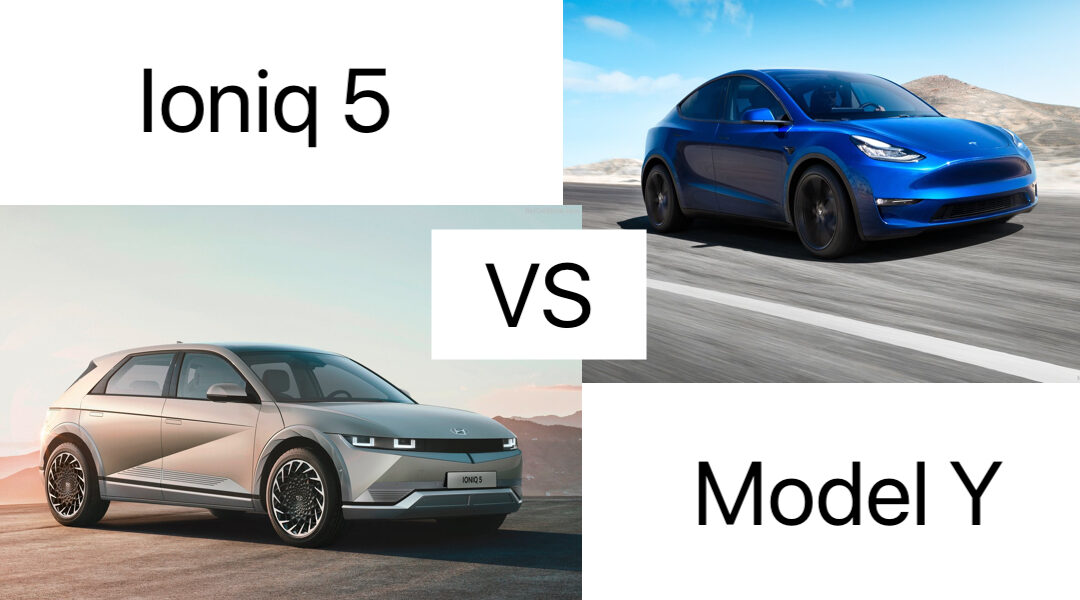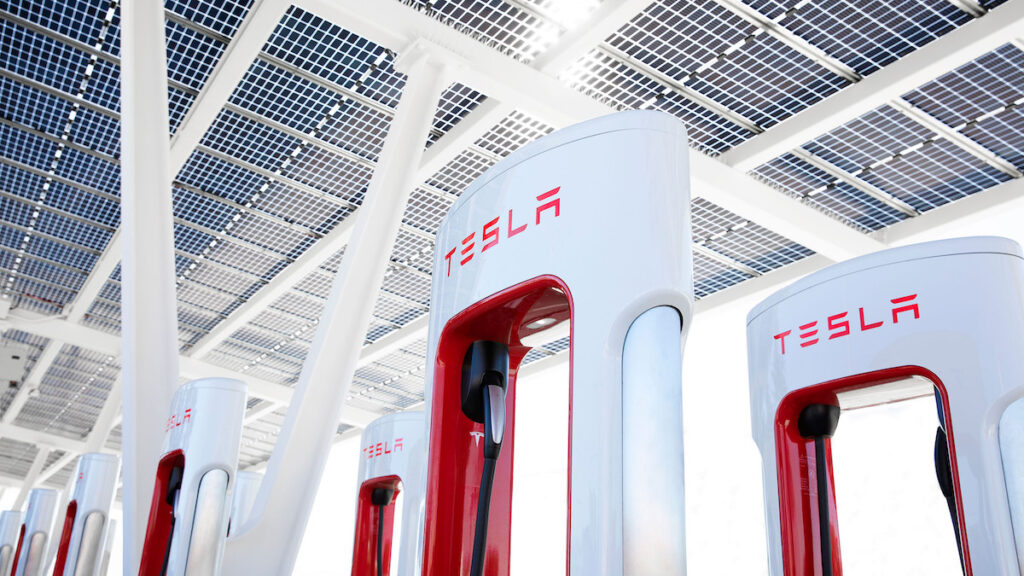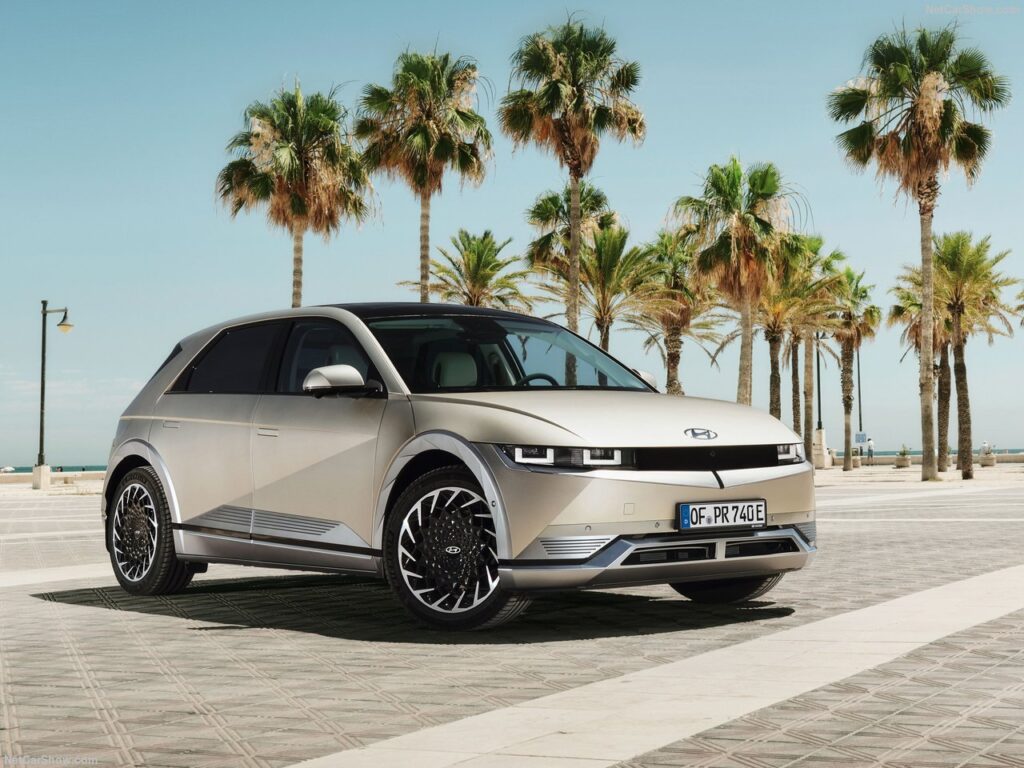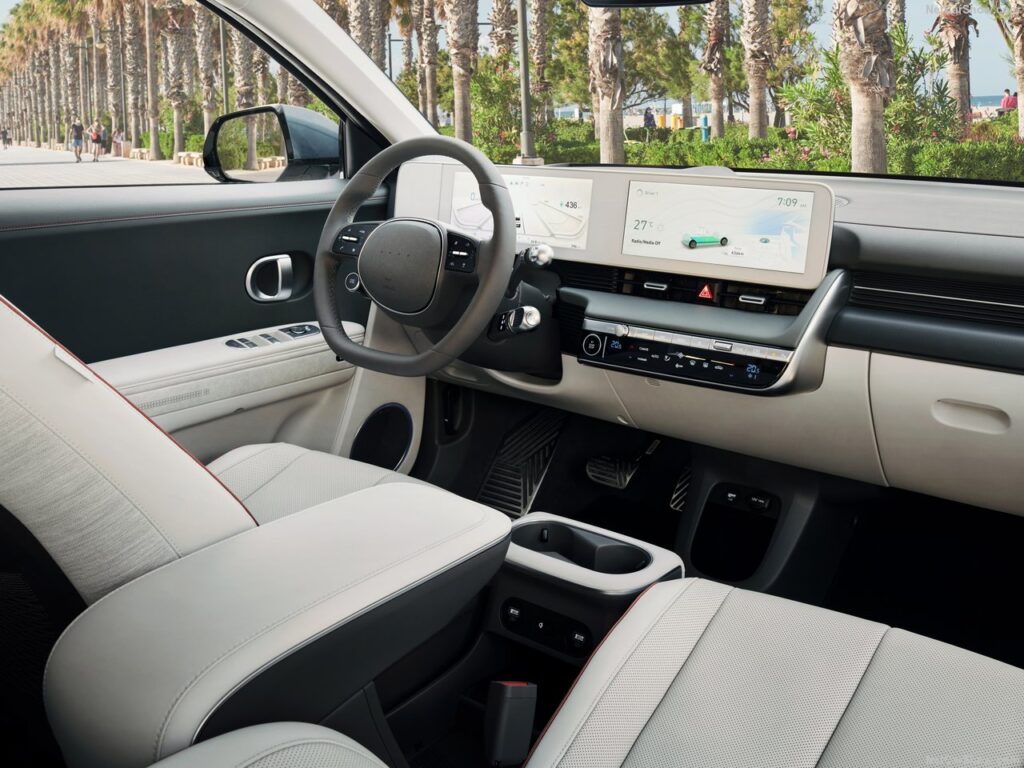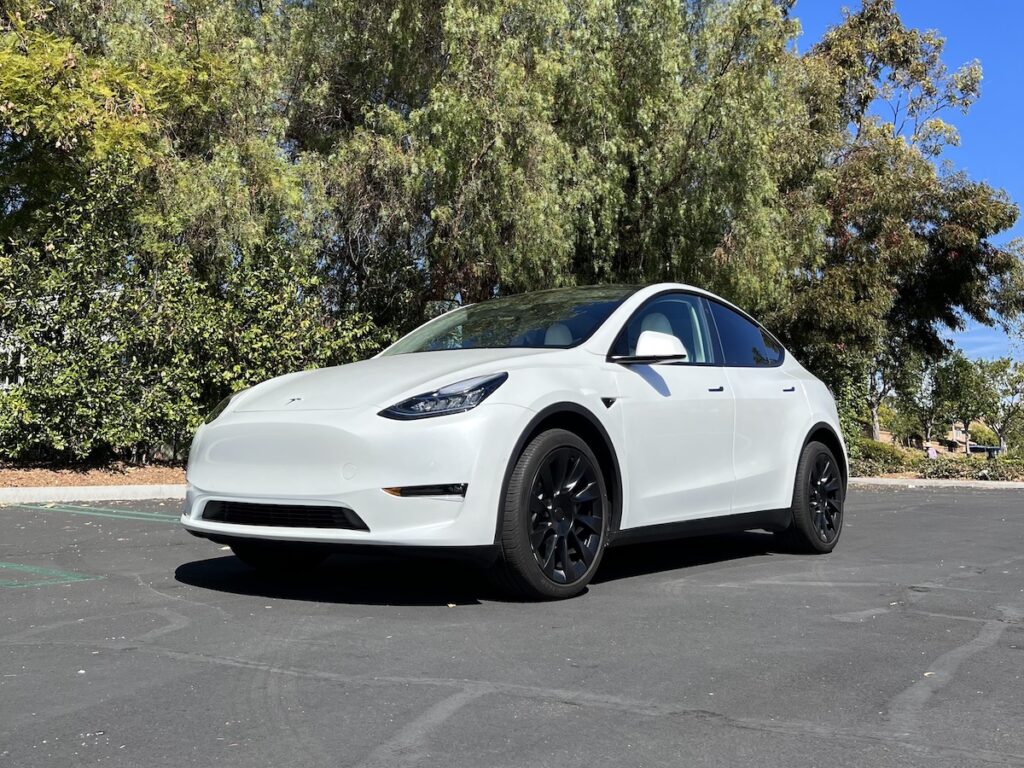Consumer appetites for small SUVs seem insatiable, and as electrification reaches every corner of the automotive landscape, a spotlight has appeared over compact EV SUVs. For two years, the Tesla Model Y has led its burgeoning niche using an unmatched charging network, stellar range estimates, and cutting-edge driver assistance features. New competition from Volkswagen, Ford, and Chevy are applying pressure, but the most promising Model Y alternative may be from Hyundai.
Pivoting the Ioniq name to launch a series of all-electric models, Hyundai introduces the Ioniq 5 as an attainable, feature-rich, and stylish crossover with strong range figures to match. Which EV is best?
Range and Charging
Whether shoppers are new to the EV scene or looking for an upgrade, charging and range will be top of mind. The Tesla Model Y is equipped with a 75 kWh battery and all-wheel drive for both Performance and Long Range trims. The Long Range variant is EPA rated at 326 miles, though our EV range test returned 317 miles.
For on-the-go charging, Tesla’s expansive Supercharger network is unparalleled. A 30-minute visit can bump the Model Y’s battery from 10 to 80 percent. Alternatively, the Model Y’s on-board charger will fully replenish a depleted battery in around 7.5 hours.
Hyundai offers the Ioniq 5 in three trims with two battery packs. The rear-drive, 77 kWh model touts 303 miles of range, but a more comparable all-wheel drive version is EPA rated at 256 miles. Our real-world range test revealed a more impressive 270 mile range.
Hyundai can’t match Tesla’s Supercharger network, so owners will need to rely on public charging or use the Ioniq’s on-board unit. If available, a 350-kW DC fast charger can ramp the Ioniq’s battery from 10 to 80 percent in just 18 minutes. Otherwise, the Ioniq will recharge from a Level 2 outlet in just under 7 hours. The Model Y’s range and charging flexibility give it the win here.
Winner: Model Y
Comfort and Styling
Tesla may push the envelope in battery and driving technology, but it’s among the most conservative automakers when it comes to styling. Little more than a lifted Model 3, the Model Y sports an equally unremarkable design. Inside, the story is even more sober, with a single 15-inch screen and a steering wheel decorating the dash. The leatherette seats prove comfortable during long distance travel, though they lack ventilation.
Hyundai counters with a distinctive 1980s hatchback retro vibe for its Ioniq 5. From its pixel design themed lights to its edgy panels, the Ioniq 5 begs for a second glance. Inside, there’s an adjustable, open layout and an intuitive interplay of physical and touch-sensitive controls. Plush leatherette seats with heating and ventilation combine with a well-damped suspension for a comfortable ride. And unlike the noisy Model Y cabin, the Ioniq 5 is serene in motion. Curb appeal and premium ride quality put the Ioniq 5 ahead.
Winner: Ioniq 5
Tech and Safety
The Model Y’s prominent infotainment boasts excellent resolution, a high refresh rate, and immediate responsiveness. Alas, Tesla doesn’t offer Apple CarPlay or Android Auto in its vehicles. Furthermore, without a gauge cluster in the Model Y, drivers must take their eyes off the road to view speed and range. Tesla’s cutting-edge driver assistance features provide some relief, however. Under certain conditions, the Model Y’s semi-autonomous driving technology can navigate point-to-point without driver control.
Hyundai’s cabin will feel more familiar to most shoppers, including a reconfigurable digital gauge cluster and a 12.3-inch touchscreen infotainment. Apple CarPlay and Android Auto are on hand, and common settings like steering wheel tilt/telescope aren’t buried within menus. Though not as comprehensive as Tesla’s Autopilot, Hyundai’s driving aids reduce fatigue on long trips. Tesla’s commitment to innovation is matched by Hyundai’s intuitive design.
Winner: Tie
Value
The Tesla Model Y Long Range is less expensive than the Performance variant at $53,000. Tesla exhausted its $7,500 federal tax credit, so buyers must rely on state incentives for any on-paper savings. Warranty coverage is average for the segment at 4 years/50,000 miles basic, plus 8 years/120,000 miles battery.
Hyundai’s Ioniq 5 dual-motor AWD starts at $48,375 in SE trim before considering a $7,500 tax credit. Warranty coverage trumps the Tesla at 5 years/60,000 miles basic and 10 years/100,000 miles battery. A more accessible starting figure and better warranty favor the Ioniq 5.
Winner: Ioniq 5
Conclusion
The 2022 Tesla Model Y holds an edge in range and driver aids, but Hyundai’s Ioniq 5 is a more polished product with both style and substance. If given the choice between these EV SUVs, we’d pick Hyundai champion.

